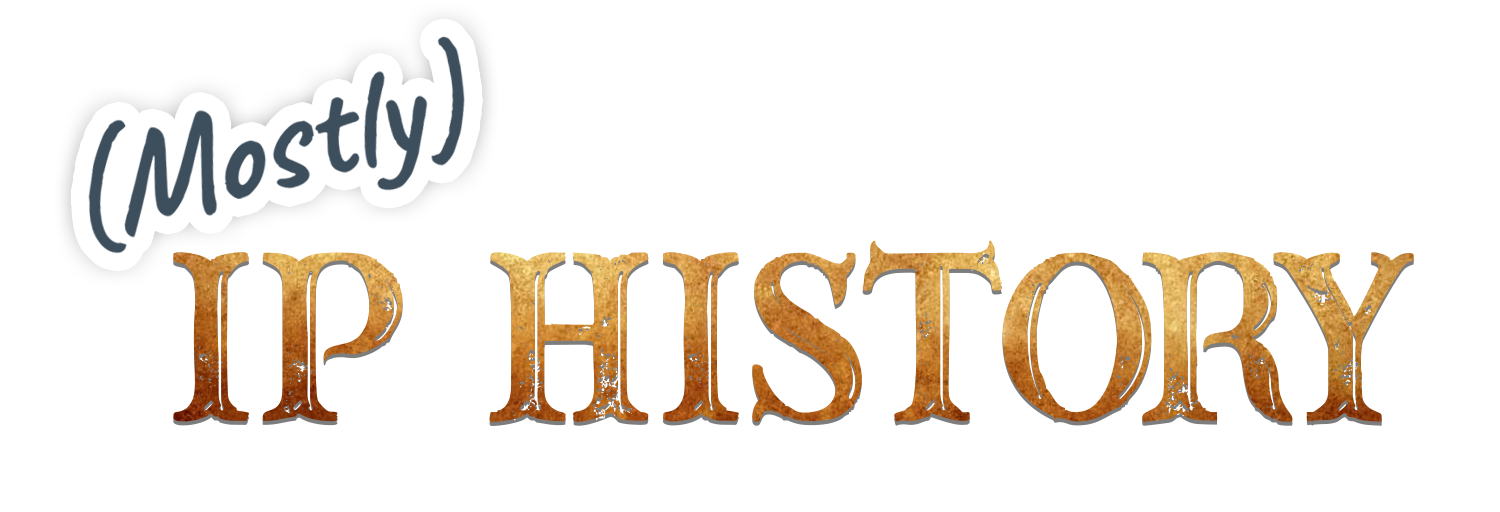How Copyright Came to the Library of Congress
With recent events, new focus has been put upon the relationship between the US Copyright Office and the Library of Congress. I think it’s worth exploring a bit of how things got this way. In this post, I’ll explicate a bit on how copyright ended up in the Library of Congress, and in a subsequent post I’ll explore how the Copyright Office became its own entity. I’ve already posted a bit about the early interactions between the Library of Copyright and nascent Copyright Office, and I hope to post more about that as well.
As most people who dabble in copyright know, copyright in America has generally consisted of three parts: Notice, Registration, and Deposit. The notice is generally an act taken by the author or his/her assignee (generally the publisher)to provide notice of copyright – in the very beginning this actually required publishing a notice in a newspaper, but mostly all that has been required is placing a copyright notice on the work. Registration is of course the act of registering the work for copyright with the statutorily-designated register. Deposit is the act of depositing one or more copies pursuant to the statute.
From 1790 to 1846, Copyrighted works were registered with the local federal district court, and the registration was only perfected when copies were deposited with the Secretary of State in Washington DC – at first directly by the author/publisher, and later by the clerk of the District Court in bulk. However, in 1846 the act establishing the Smithsonian Institution contained a provision requiring deposit of copies registered for copyright with both the new Smithsonian and the Library of Congress.1 This provision was not part of the original versions of the act, but instead was proposed orally by Stephen Douglas (of Lincoln/Douglas fame) as the final amendment offered before the successful vote on the bill in the House.2 Accordingly, there is precious little legislative history for the change, although it does generally fit into the Smithson bequest’s requirement that it be used to fund “an establishment for the increase and diffusion of knowledge among men.”
However, the Smithsonian Institution was never particularly happy with being a depository for copyright books, and in 1859, with the acquiescence of the Librarian of Congress, Congress shifted the venue for copyright deposit to the Patent Office. And even as these changes for copyright deposit ensued, copyright registration had steadfastly remained with the local district courts. In 1862 a bill was introduced in the House of Representatives to move copyright registration to the Patent Office and divest the District Courts of their registration duties. In response, a group of publishers sent a memorial (PDF, 1MB) to Congress, protesting any such change. The bill never gained any traction, although it is possible there were simply higher priorities in Congress in 1862.
In 1865, the newly-appointed Librarian of Congress, Ainsworth Spofford, was able to insert language into the law adding photographs to copyright law revitalizing the requirement of deposit of copyrighted works with the Library of Congress.3 The new librarian vigilantly lobbied to increase the role of the Librarian of Congress, and when a friend of Spofford’s was appointed the new commissioner of Patents in 1869, the resistance to Spofford’s efforts faded away.4 In 1870 the only omnibus revision of intellectual property law in American history was passed, and one of its changes was the transfer of all copyright registration and deposit activities to the Library of Congress.
This story continues with the story of how the Copyright Office formed
- 9 Stat. 102, 106. The relevant §10 of the Law stated that “the author or proprietor of any book, map, chart, musical composition, print, cut, or engraving, for which a copyright shall be secured under the existing acts of Congress, or those which shall hereafter be enacted respecting copyrights, shall, within three months from the publication of said book, map, chart, musical composition, print, cut, or engraving, deliver, or cause to be delivered, one copy of the same to the librarian of the Smithsonian Institution, and one copy to the librarian of Congress Library, for the use of the said libraries.” An amendment was proposed by Sen. Dix to replace “Congress Library” with “Library of Congress,” but this amendment did not succeed. ↩
- Pg. 749 of the Congressional Globe, April 29, 1846 ↩
- 13 Stat. 540. ↩
- This is discussed in more detail in the footnotes to William Patry’s Copyright Law and Practice. ↩





